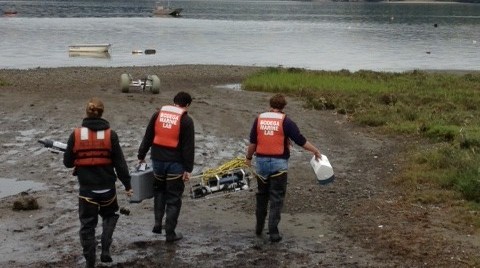
Every summer for the past decade, fishermen and beachgoers along the Oregon coast have noticed dead crabs scattered along the shore, sometimes washed up in bunches. No one knows for sure why it’s happening, but scientists think “dead zones” formed by low oxygen levels in coastal waters could be the culprit.
The oceans absorb about a third of the carbon dioxide we pump into Earth’s atmosphere, which means that as we increase carbon dioxide in the air, we increase it in the ocean as well. The carbon dioxide reacts with water to create an acid, so that, over time, scientists with the National Oceanic and Atmospheric Administration say, ocean acidity has risen by about 30 percent and oxygen levels have dropped.
Scientists say the combined impacts of decreasing oxygen and increasing acidity could be disastrous for marine ecosystems and the humans who depend on them, not only in California and along the West Coast, but on the East and Gulf Coasts as well.
Mollusks such as oysters and clams depend on minerals in the ocean to form their shells — specifically, calcium carbonate minerals. Increasingly acidic waters deplete the storehouse of calcium carbonate minerals, threatening the ability of shellfish to grow the structures in which they live.
Shellfish, and most other marine organisms, also need oxygen in the water to survive. When oxygen levels get to too low — a condition called hypoxia — it can kill them, which is what scientists think happened to the crabs on Oregon’s beaches. Canadian scientists in 2007 found that oxygen levels off the West Coast have already declined by 20 percent over the past 50 years.